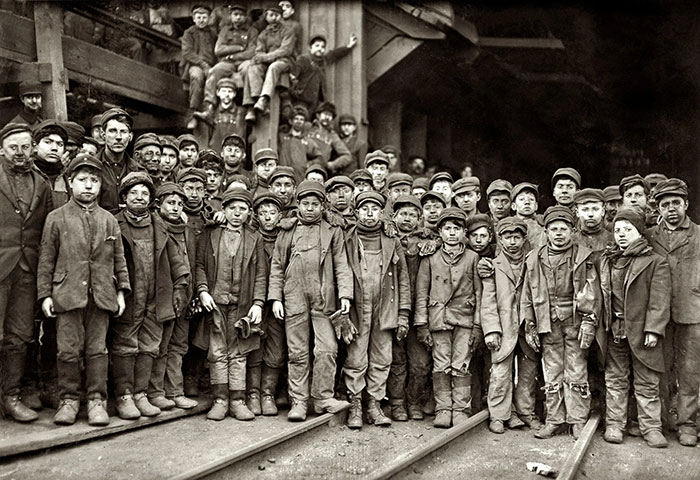
“Breaker boys,” most 8–12, who worked 60-hour weeks breaking coal when child labor was permitted
A breaker boy was a young coal-mining worker in the 19th and early 20th centuries who worked in coal mines in the United States and United Kingdom. These boys, usually between the ages of 8 and 12, were employed to separate impurities and debris from the coal after it was brought to the surface.
The job of a breaker boy was physically demanding and dangerous. Their primary task was to work in coal breakers, which were large industrial machines used to crush and sort coal. The coal would pass through various screens and conveyors, and the breaker boys would manually pick out rocks, slate, and other impurities from the coal as it moved along the conveyor belts.
Breaker boys often worked long hours in cramped and hazardous conditions. They would use their bare hands to remove debris from the fast-moving coal, risking injury or even death if they became caught in the machinery. The work environment was dusty and dirty, exposing the boys to coal dust, which could lead to respiratory problems over time.
Child labor laws were not well-enforced during this period, and many breaker boys came from impoverished families who relied on their income. However, public awareness of the harsh working conditions faced by these children eventually led to labor reforms and the gradual decline of the breaker boy system.

Theodore Lee is the editor of Caveman Circus. He strives for self-improvement in all areas of his life, except his candy consumption, where he remains a champion gummy worm enthusiast. When not writing about mindfulness or living in integrity, you can find him hiding giant bags of sour patch kids under the bed.
